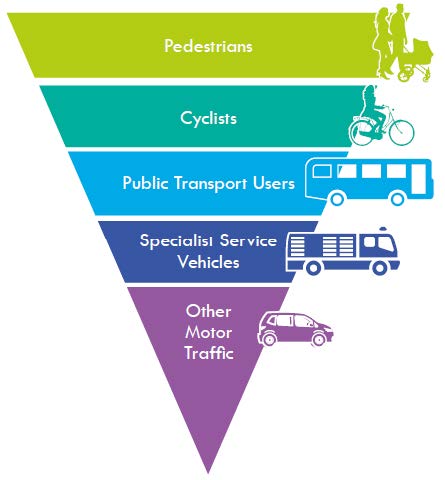The Low Traffic Neighbourhood Debate… How, as engineers, Do We Influence the Discussion?
As published in New Civil Engineer, our Director, Annabel Precious explores the LTN concept and looks at how engineers can influence the discussion……
BBCs Panorama programme “Road Wars: Neighbourhood Traffic Chaos” relating to the implementation of Low Traffic Neighbourhoods (LTNs), has prompted a range of emotions since being aired on 17 April.
The Low Traffic or Liveable Neighbourhoods concept aims to reduce through traffic on residential streets, encouraging drivers to stick to main routes designed for traffic, thereby making residential streets areas where people feel safe to walk, cycle, play and enjoy their community. What’s not to love?
Over half of all journeys in England are less than 5km, so there is significant potential to reduce car dependency if we can design infrastructure in the right way. A large majority of communities where LTNs have been successfully implemented are innovators and early adopters of the schemes. But it seems the focus of the argument against LTNs and the 15-minute neighbourhood concept are still focused around conspiracy theories relating to reducing freedom.
What it should – or could – be is a focus on facilities being provided locally in urban areas, so car dependency is reduced. This creates places that give people more freedom, enabling them to travel actively without being hemmed in by traffic on our existing road infrastructure.
It’s been interesting to observe the strength of feeling against LTN schemes in recent years, in the press and through protests, typically – and ironically – held at the side of busy roads, where protesters are preaching to the converted. But is this the full story? Are the headlines only reporting the loudest voices of those most addicted to car travel, potentially ignoring the views of a large majority of society who have a conscience that favours a more sustainable future for people and planet?
The intention of LTN strategies is to encourage residents living within a given neighbourhood or local area to complete short journeys by non-vehicle modes such as walking, cycling, scootering and using public transport more. The benefits of these active travel modes are well researched and are shown to improve physical and mental health, as well as reduce air pollution and greenhouse gas emissions.
Policy in favour of active travel is clear, as shown by government investment and the setting up of Active Travel England, a statutory consultee for developments over 150 homes or 1,500m2, to provide training for councillors and council officers on how to encourage walking and cycling through design.
Evidence from LTNs that have been successfully implemented shows they are effective at reducing traffic and improving air quality. Opposition to successful schemes has melted away since their successful implementation, as seen in Altrincham in Greater Manchester and Walthamstow and Hackney in London.
As active travel transport engineers, we continually witness the usual outcry from drivers once fully consulted active travel road schemes are implemented. I liken this to the five stages of grief: denial, anger, bargaining, depression and acceptance. You often find schemes can take a few years before travel patterns change and road users start doing things differently, or even enjoy the benefits LTN schemes can offer.
Schemes where people are prioritised over cars also have wider reaching benefits that often aren’t reported, such as improvements to property vacancy rates, footfall increases, crime reductions and air quality improvements. Placemaking is based on a simple principle: If you plan places for cars and traffic, you will get cars and traffic. If you plan for people, you will get more people.
The initial strength of feeling against LTN schemes, such as the witnessed vitriol, anger and malice shown on Panorama relating to the LTN scheme in Oxford, comes from the culture created by the concept of the “car as king”. This outdated idea that a car provides freedom holds firm in the psyches of many interviewed by the mainstream press when asked their views of LTNs.
It is a utopian view of the car that has been reinforced through advertising over the past decades, along with outdated approaches to infrastructure planning. Just as advertising for smoking has been banned, does car advertising also need to be banned? It promotes the so-called utopia of driving a car, when the reality is so different in urban areas; LTNs are being implemented to address serious climate change and air quality issues.
Design guidance for transport engineers is often slow to change from many local highway authorities’ perspectives, hindering the pace of acceptance of a less car-centred approach to design and the advent of policies for planning 15-minute neighbourhoods. The Transport Decarbonisation Plan, Gear Change and Cycling and Walking Investment Strategy have made early progress in moving towards this much needed change.
As engineers, we all have a role to play in challenging ourselves to design resilient and sustainable infrastructure for future generations. And we live in interesting times, where opposing views operate in tension, as shown by the juxtaposition of planned climate crisis protests against the backdrop of ongoing LTN protests.
We in the engineering sphere need to be innovators and early adopters, leading the way to show that different ideas about living and travelling are possible. Where do you sit on the debate?
